IRF
IRF Uppsala
RPF programme
IRF-U Staff
Seminars
Courses
PhD studies
Examensarbete
Workshops
Cluster
...EFW
...Quicklook
Cassini
Rosetta
Solar Orbiter
Intranet
| INSTITUTET FÖR RYMDFYSIK | UPPSALA |
 |
|
| Swedish Institute of Space Physics | (59°50.272′N, 17°38.786′E) |



EISCAT -3D User
Meeting 2011
A 3rd user meeting for the
EISCAT_3D project will
take place in Uppsala, Sweden,
on
May 18-20, 2011. It will focus
on planning for the Science of the EISCAT_3D project, emphasizing
particularly Atmospheric Physics.Programme
Please
contact anyone of the programme committee, Anita Aikio, Ian McCrea, or Esa Turunen for questions or suggestions
of minor changes.May 18, Wednesday, 10.00-17.00: EISCAT3D and Atmospheric Science
Location: Lecture Hall 80121, Ångstrom Laboratory, Uppsala University
10:00 The atmospheric section of the EISCAT_3D science case (Ian McCrea)
10:30 Hot Science Questions in the MLT: Potential for observations with EISCAT_3D
(Norbert Engler and Markus Rapp)
11:00 Coffee
11:30 Studies of gravity waves and turbulence in the atmosphere (Viktoria Sofieva)
12:00 EISCAT 3D and collaborative studies of the middle atmosphere
- gravity waves, tides and planetary waves (Nick Mitchell)
12:30 Lunch
14:00 New EISCAT_3D opportunities for atmospheric research from the middle
down to the lower altitudes (Evgenia Belova and Sheila Kirkwood)
14:30 Monitoring space weather impacts on D-region electron densities with EISCAT_3D
(Mark Clilverd)
14:50 Interaction of ice, smoke and charges in the polar summer mesosphere
(Jörg Gumbel)
15:10 Coffee
15:40 MU radar head echo observation programme for sporadic and shower meteors:
2009 June to 2010 December (Johan Kero)
15:00 D-region data from the ESR during the International Polar Year (Esa Turunen)
16:20 Upcoming daytime thermospheric wind measurements (Qian Wu)
16:40 Open discussion of atmospheric section, identification of missing topics
17:30 Close
Poster: Energetic electron precipitation seen in the IPY ESR dataset (Rory Gamble)
May 19, Thursday, 9.00-17.00: General EISCAT3D Science
Location: Lecture Hall 2005 (until 12) and 80115 (after 12), Ångstrom Laboratory, Uppsala University
09:00 EISCAT_3D Science case (Anita Aikio and Ian McCrea)
09:30 Small scale auroral observations (Betty Lanchester)
09:50 The next orders of magnitude in auroral observation (Björn Gustavsson)
10:10 Review of the polar ion upflow (Yasonobu Ogawa)
10:30 Coffee
11:00 Mesoscale ionospheric tomography in Scandinava (TOMOSCAND)
and EISCAT_3D: added value for both projects (Olaf Amm)
11:20 Some science questions for EISCAT_3D (Kjellmar Oksavik)
11:40 Lunch, change of location to lecture hall 80121
13:10 Solar wind measurements with EISCAT_3D (Richard Fallows)
13:30 On designing the EISCAT_3D system (Markku Lehtinen)
14:10 Dual polarisation lag profile inversion (Juha Vierinen)
14:30 KAIRA – Status, progress and ambitions for a combined EISCAT/LOFAR station
in Finland (Derek McKay-Bukowski)
14:50 KAIRA Science (Thomas Ulich)
15:10 Coffee
15:30 Radar probing of azimuthal perturbations: experimental demonstration of the spiral
(OAM) imaging technique at radio frequencies (Bo Thidé)
15:50 Effects of antenna aperture and radio wave orbital angular momentum on the
incoherent scatter spectrum (Thomas Leyser)
16:10 Swedish national application to Research Council (Asta Pellinen-Wannberg)
16:30 Reaching out to a global user community (Thomas Ulich and Derek McKay-Bukowski)
16:50 Open discussion
17:30 Close
Poster: Constraining radar interferometer design using optical auroral images (Sam Tuttle)
May 20, Friday, 9.00-12.00:
Current Status and Future Plans of the Preparatory Phase
Location: Lecture Hall 80121, Ångstrom Laboratory, Uppsala University
09:00 EISCAT_3D and the EISCAT Roadmap (Esa Turunen)
09:20 WP1 and WP2: Management and site selection (Esa Turunen)
09:30 WP3: Science Planning and User Engagement (Anita Aikio)
09:40 WP4: Outreach activities (Anders Tjulin)
09:50 WP5: Consortium building (Esa Turunen)
10:00 WP6: Performance specification (Ian McCrea)
10:10 WP7: Digital signal processing (Markku Lehtinen)
10:20 WP8: Antenna, front end and time synchronisation (Tore Lindgren)
10:40 Coffee
11:10 WP9: Transmitter development (Gudmund Wannberg)
11:30 WP10: Aperture synthesis imaging radar (Vasyl Belyey)
11:40 WP11: Software theory and implementation (Mikko Orispaa)
11:50 Project plans for the next 12 months (Ian McCrea)
12:10 Open discussion, identification of actions
12:30 Lunch and close
Registration
The local organizer is Stephan Buchert. Registration opens on December 13, 2010. Deadline has been extended to May 6, 2011! Registration can still be done by email to scb@irfu.se. Please let me know if you would like to have assistance for reserving accommodation.Practical Information
Map
The workshop will be in
lecture halls 80121, 2005, and 8015 of
the Ångströmlaboratoriet
of the Uppsala University,
starting
on
Wednesday,
May
18,
and
ending
on
Friday,
May
20.
If
needed,
smaller meeting rooms for
splinter sessions are available.
EISCAT-3D, a short
description
More information can be found at the
EISCAT-3D web site.EISCAT-3D is a planned next generation incoherent scatter radar facility, based on phased-array technology and multiple radar sites. The EISCAT_3D proposal was accepted on the ESFRI Roadmap of large-scale European research infrastructures in December 2008.
The EU, EISCAT, the Rutherford-Appleton
Laboratory (UK), the University of
Tromsø
(Norway), the Luleå
Technical
University
(Sweden), and the Swedish
Institute of Space Physics (Sweden) financed and undertook the EISCAT-3D design study. The results of the study were
presented at the first EISCAT
-3D
User
Meeting
2009, and a final
report has been published.
A four year long Preparatory
Phase of EISCAT_3D funded by the European Commission under the
call FP7-INFRASTRUCTURES-2010-1 started on 1 October 2010. The plans
for the Preparatory Phase actions were presented at
the
second
EISCAT-3D
User
Meeting
in
2010. The Preparatory
Phase
work
will be
performed by a consortium consisting of
EISCAT Scientific Association
University of Oulu, Finland
Luleå University of Technology, Sweden
Swedish Institute of Space Physics, Sweden
University of Tromsø, Norway
Science and Technology Facilities Council, UK
Swedish Research Council, Sweden
National Instruments, Belgium
with EISCAT acting as coordinator. A key activity of the phase will be the gathering of requirements for the science topics that will be addressed with EISCAT_3D, and the different types of new experiment which users would like to run. This activity will be coordinated within work package 3, Science planning and user engagement.